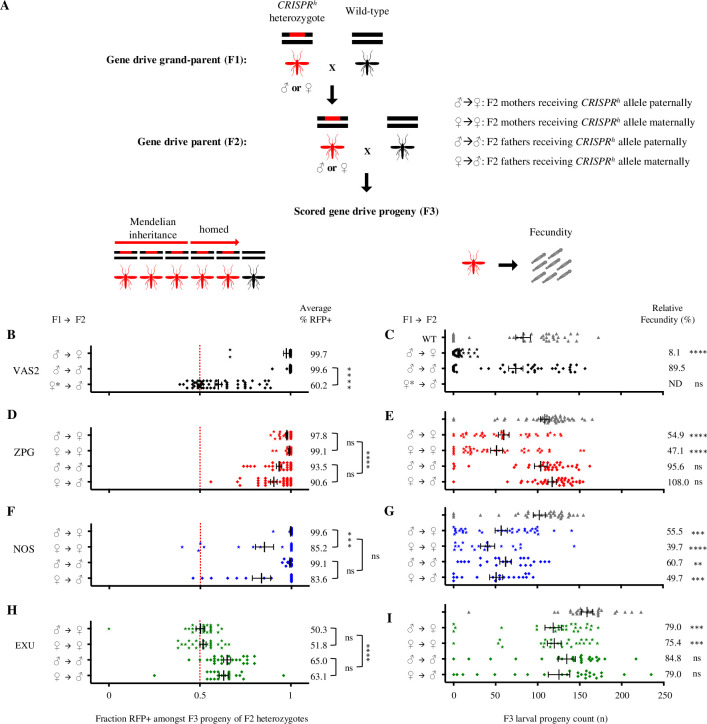Fig 2. Comparison of fecundity and homing rates in mosquitoes containing Cas9-based gene drives under regulation of zpg, nos and exu germline promoters.
Phenotypic assays were performed to measure fecundity and transmission rates for each of three drives. CRISPRh heterozygotes of both sexes were crossed to wild type (panel A, F1) and their CRISPRh heterozygous progeny were subsequently also crossed to wild type (A, F2). The larval progeny (F3) of the F2 cross were counted to determine the fecundity of CRISPRh heterozygotes (F2), depending on whether they inherited the gene drive from male or female parents (F1) (A right, C, E, G, I). The larval progeny (F3) were also scored for the presence of DsRed linked to the construct to determine gene drive transmission rates of CRISPRh heterozygotes (F2), depending on whether they inherited the gene drive from male or female parents (F1) (A left, B, D, F, H). Each data point represents one clutch from one individual F2 female. Average transmission rates are shown on the right of panels B, D, F, H (Mann-Whitney test, ****: p < 0.0001, ***: p < 0.001, *: p < 0.05, ns: non-significant), and relative fecundity to wild type is depicted on the right of panels C, E, G, I (Kruskal-Wallis test, ****: p < 0.0001, ***: p < 0.001, **: p < 0.01, ns: non-significant). Males and females were further separated by whether they had inherited the CRISPRh construct from either a male or female parent (Mann-Whitney test, ****: p < 0.0001, ***: p < 0.001, *: p < 0.05, ns: non-significant). For example, ♂→♀ denotes the progeny count and gene drive transmission rates in the progeny of a heterozygous CRISPRh female that had inherited the drive allele from a heterozygous CRISPRh male, when crossed to a wild-type male. High levels of homing were observed in the germline of zpg-CRISPRh and nos-CRISPRh males and females, however the exu promoter generated only moderate levels of homing in the germline of males but not females (Mann-Whitney test, p < 0.0001). The significant maternal effect upon homing performance in offspring previously seen for vas2-CRISPRh (Hammond et al., 2017, reproduced here in panel B) was also observed in nos-CRISPRh, but not for zpg-CRISPRh (Mann-Whitney test, ****: p < 0.0001, **: p < 0.001, *: p < 0.05, ns: non-significant). Counts of hatched larvae for the individual crosses revealed improvements in the fertility of heterozygous females containing CRISPRh alleles based upon zpg, nos and exu promoters compared to the vas2 promoter. Phenotypic assays were performed on G2 and G3 for zpg, G3 and G4 for nos, and G15 for exu. ♀* denotes vas2-CRISPRh females that were heterozygous for a resistance (r1) allele, these were used because heterozygous vas2-CRISPRh females are usually sterile. ND = not determined.

